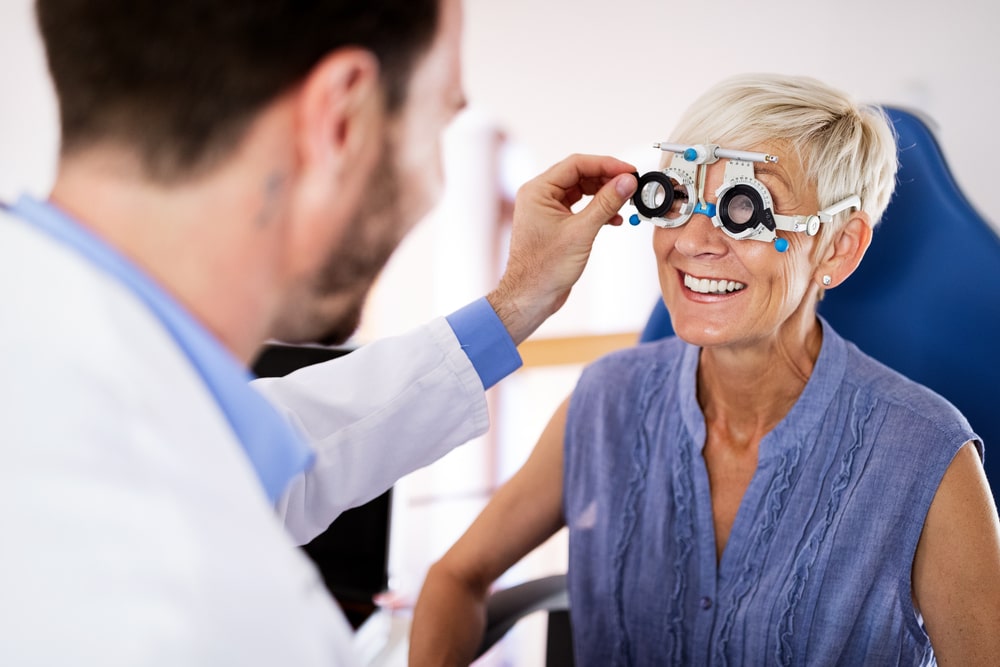Diabetes is a condition that impairs the body’s ability to produce the insulin hormone, resulting in increased levels of glucose in the bloodstream. Continuous high blood sugar levels can elevate the risk of various eye-related issues.
One of your optometrist’s primary goals is to optimize the overall health of your eyes. A significant portion of your eye health depends on your overall physical well-being. While visiting your eye doctor is crucial for maintaining good eye health, there are other things you can do to reduce the risk of diabetes-related complications affecting your vision.
What Sets Apart a Diabetic Eye Exam from Other Exams?
There is no universal approach to preventive care. An eye exam for an adult typically differs from that of a child. This distinction doesn’t imply that one person’s vision is more valuable, but rather that their required care varies.
A diabetic eye exam operates in a similar manner. Individuals with diabetes face an elevated risk of specific eye diseases or conditions, such as glaucoma or cataracts. During this exam, your optometrist may conduct extra tests and place a greater emphasis on detecting particular issues. Your eye specialist will perform tests to examine the rear part of your eye meticulously, with the goal of detecting any eye diseases or conditions that diabetes may predispose you to.
How Is It Done?
Prior to the exam, your eye doctor will administer eye drops to expand (dilate) your pupils, facilitating a clearer view inside your eye. Additionally, you may receive eye drops for numbing purposes. Subsequently, your doctor will use a special instrument to examine the back of your eye. It typically takes around 15 to 20 minutes for the eye drops to completely dilate your pupils, while the examination itself only lasts a few minutes.
When Do You Need a Diabetic Eye Exam?
- Type 1 diabetes: Arrange for an eye exam within five years of your diagnosis.
- Type 2 diabetes: Schedule an immediate eye exam upon diagnosis. It’s important because type 2 diabetes is often diagnosed years after onset, making early detection of potential retinal damage crucial.
Pregnant with diabetes: Plan an eye exam during the first three months of pregnancy and another one year after giving birth.
Following your initial eye examination, eye specialists recommend annual check-ups to continuously monitor your eye health. If your eye doctor identifies any changes during an examination, you may need to return for additional eye exams more frequently than once a year.
What Happens After?
If you’ve received eye dilation drops, expect your vision to remain blurry for approximately six hours. It will be more challenging to focus on objects up close, so it’s important to arrange for someone to drive you home.
Furthermore, be aware that your eyes are more susceptible to sunlight damage when your pupils are dilated. It’s essential to wear dark sunglasses or shield your eyes until the effects of the drops have fully subsided.
Manage Your Diabetes
To maintain good health, it’s essential to:
- Monitor your blood sugar levels regularly.
- Adhere to the prescribed medications from your doctor to effectively manage your blood sugar.
- Maintain a healthy lifestyle by following a nutritious diet, engaging in regular physical activity, and managing your weight.
- Keep up with regular medical check-ups.
- Schedule an annual eye examination.
- Steer clear of tobacco products.




